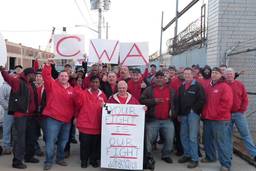After 40 years, still no federal rule regulating excessive heat on the job
Last week, Public Citizen, Farmworkers Justice and the United Electrical, Radio and Machine Workers of America (UE) called on the Occupational Safety and Health Admiinistration after 40 years of delay to finally adopt a rule regulating excessive heat in the workplace. Over the past 20 years, at least 523 workers have died from heat stroke and another 43,000 have suffered from heat – related injuries serious enough to have to miss at least one day of work.
A study by the GAO, however, says the number of workers who suffer heat-related injuries and death is often underreported. Under the general duty clause of the 1970s law that created OSHA, the federal agency has the power to regulate heat in the workplace on an ad-hoc basis. During the last 40 years of workplace inspections, though, OSHA has only conducted 113 inspections on heat-related problems that led to a fine or citation. Advocates argue that OSHA must adopt a heat standard in order for there to be uniform regulation of heat problems in the workplace.
“OSHA has demonstrated an alarming lack of oversight over the past 40 years in the face of this recognized and entirely preventable hazard,” said Dr. Sidney Wolfe, director of Public Citizen’s Health Research Group. “Only with the implementation of a specific, enforceable standard will hundreds of lives be saved and thousands of heat injuries prevented over the next decade.”
In 1972, the National Institute for Occupational Safety and Health recommended a highly technical detailed set of standards for how to regulate workplace problems related to heat problems. NIOSH again recommended heat workplace safety standards in 1986, but OSHA once again ignored the proposed standard. Finally in 2011, OSHA launched a voluntary workplace education campaign about heat safety issues, but no formal standards regarding extreme heat working conditions.
OSHA did not respond to request for comment on why they have not issued a formal heat standard.
“We have never been able to figure out why OSHA will not do something on this issue,” said Dr. Sammy Almashat, researcher with Public Citizen. “ We don’t really know why they haven’t acted. I suspect the reason they haven’t done it is because of pressure from industry. But no one at OSHA has told us why they have not yet started a rule making process.”








